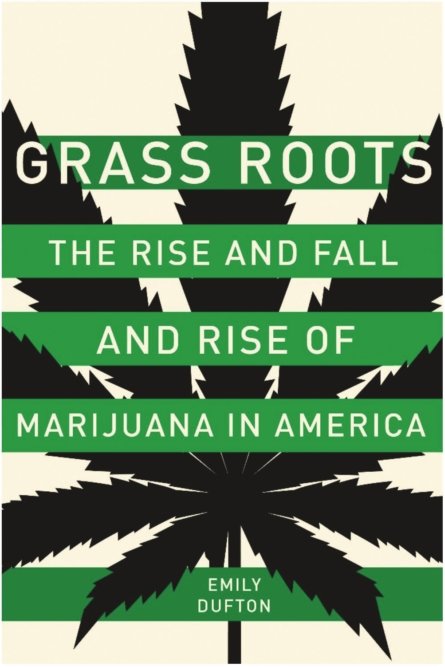Hey! Don’t bogart that joint, man! This week, California will join Washington D.C. and seven other states with its vote to legalize recreational marijuana. Here at home, Michigan tries to bring some order to the growing and sale of medical marijuana.
In the meantime, everyone holds their breath in hopes that the Department of Justice will continue to turn a blind eye to the federal policy which places marijuana on its Schedule I list with the likes of heroin and LSD.
Since 1937, when marijuana was initially made illegal, the drug has faced disparate enforcement and public response. It was not coincidental that the infamous movie “Reefer Madness” hit the circuit in 1936. Can we expect a similar backlash in 2018?
That’s one of the fascinating questions Washington D.C. history professor and author Emily Dufton considers in her new book, “Grass Roots: The Rise and Fall of Marijuana in America.”
Dufton, who began working on the book as the basis of her master’s thesis, was inspired by demonstrations against the Iraq War back in 2003. She realized ’60s-style protests had a limited role in modern times.
“I thought there has to be a better way to increase the efficacy of activism,” she said. “Previously, researchers had mostly studied the left and what they were doing while no one was exploring conservative grass roots activism.”
While exploring grass roots activism she discovered the “Just Say No” campaign. Though often credited to Nancy Reagan, it was created by parent groups that banded together as a response to their children’s drug use. By 1987 there were more than 10,000 Just Say No clubs meeting across the country.
Dufton also delved into several pro-marijuana initiatives in the ‘70s. These groups seemed to indicate that legalization was right around the corner, a temporary dalliance that even saw some support from the Carter Administration.
Dufton also gives brief mention to Michigan’s own John Sinclair, who turned his marijuana bust into a lifetime of advocacy.
She details in her book how the Just Say No program was co-opted by the private sector to promote their consumer products. The pro-marijuana initiative also faced a total downer when Jimmy Carter’s drug czar, Peter Bourne, did some lines of cocaine at pro-marijuana group NORML’s Christmas party. The ensuing controversy resulted in his firing, costing anti-drug war activists an important ally.
Today’s activists, at both a national and local level, would be well served to take a trip back in time with Dufton’s book. They’ll learn the battle is far from over.
One example of success that Dufton cites in her book is that of Mary Jane Rathbun, popularly known as Brownie Mary. Mary was a San Francisco waitress turned care taker for gay young men struggling with HIV/AIDS.
Dufton titles the chapter “The Florence Nightingale of Medical Marijuana” and shows first-hand how a grass roots movement could be started by inspired individuals.
Dufton also reminds readers about Robert Randall, the person who has been called the “father of the movement.” Randall popularized the use of marijuana for slowing the onset of glaucoma.
He was busted for growing marijuana and his subsequent trial found him not guilty, turning him into a national activist for medical marijuana.
It’s important to note that Brownie Mary’s business wasn’t run just for love. She was regularly making $500,000 annually from her business. This was pointed out by law enforcement officials when they busted her in 1981 and again in 1992.
The second bust rocketed her into national fame and in 1992, 80 percent of San Francisco voters supported a ballot issue for medical marijuana. Prop 215, passed in 1996, made California the first state to legalize medical marijuana.
Dufton also points out that while parent activists called the new law a “Trojan horse,” their cries were largely ignored as other states began seeking their own protections for the use of medical marijuana.
Dufton writes a cautionary tale for current activists. “History shows that nothing is certain and you never know what lies around the corner,” she said.
The book argues that doctors need to be won over by the drug’s potential medical uses and more research needs to be done, but the necessary research can be limited by the drug’s Schedule I classification.
Dufton also warns that even though Big Pharma, which has the most to lose from legalization, may not have the same clout as the parenting movement of the ‘80s, it is still a “formidable opponent.”
Book Club meets Jan. 11
City Pulse will kick off its book club for 2018 at 7 p.m. Jan. 11 at Schuler Books & Records in Eastwood Towne Center, not Jan. 4, as previously reported. For the entire year, the club will read books related to 1968 in this its golden anniversary year. The first book is ‘1968 The Year that Rocked the World,” by Mark Kurlansky.
Support City Pulse - Donate Today!
Comments
No comments on this item Please log in to comment by clicking here